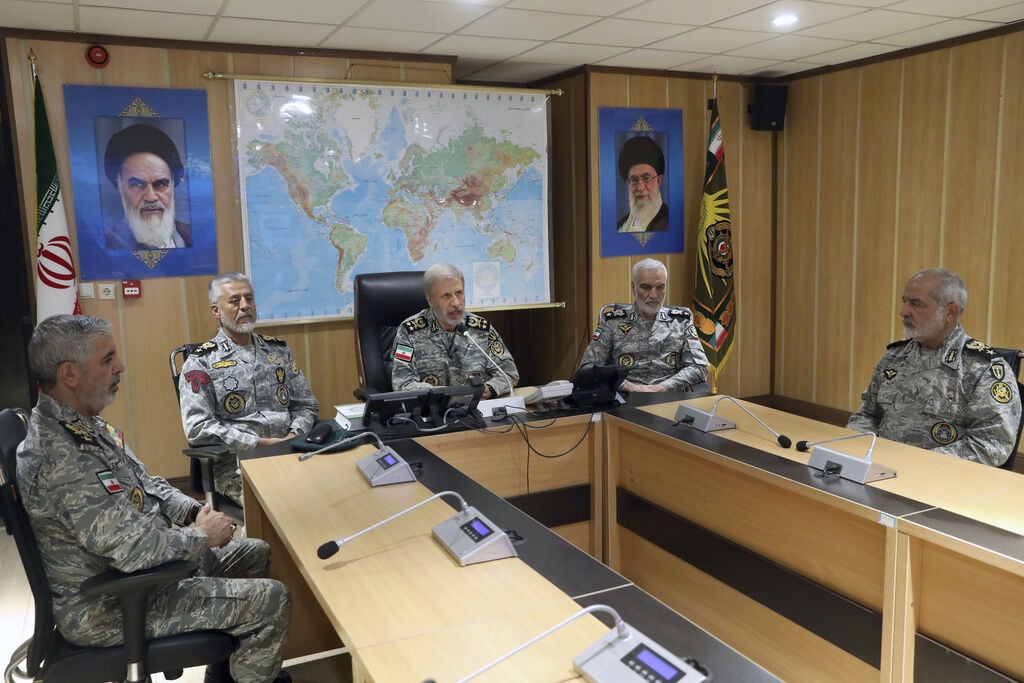Iran Launches Missile Attack on US Base in Qatar

On June 23, 2025, Iran’s Islamic Revolutionary Guard Corps launched a missile barrage at the United States’ Al Udeid Air Base in Qatar, in response to recent US and Israeli airstrikes on Iranian nuclear facilities. The attack, named “Operation Annunciation of Victory,” triggered wide concern—but resulted in no casualties.
🎯 What Happened
Iran fired approximately 14–19 short- and medium-range ballistic missiles toward Al Udeid, the largest US military base in the Middle East. Qatar's air defences intercepted all but one, which landed harmlessly inside base grounds, with no damage reported :contentReference[oaicite:1]{index=1}. Iran alerted Qatari and US authorities in advance to ensure there were no casualties :contentReference[oaicite:2]{index=2}.
“US bases and mobile military assets in the region are not points of strength, but rather major vulnerabilities.” — Iranian official, IRGC statement :contentReference[oaicite:3]{index=3}.
🌍 Why It Matters
The strike came in direct retaliation for recent US-led bunker-buster bombings at Iran's Fordow, Natanz, and Isfahan nuclear sites. It signalled that Iran was willing to strike at high-value US regional assets—even while carefully avoiding civilian harm or escalation :contentReference[oaicite:4]{index=4}.
Iran explicitly stated the operation was not aimed at Qatar itself but at US military presence. Qatar condemned the strike as a breach of its sovereignty and reserved the right to respond in line with international law :contentReference[oaicite:5]{index=5}.
📌 Strategic Context
Al Udeid Air Base hosts around 10,000 US personnel and serves as CENTCOM’s regional hub. It was strategically emptied of aircraft before the attack, and Qatar closed its airspace temporarily as a precaution :contentReference[oaicite:6]{index=6}.
User evacuation alerts were issued by Western embassies in Doha prior to the strike, and Bahrain also closed its airspace. These measures kept the incident casualty-free :contentReference[oaicite:7]{index=7}.
💬 Official Reactions
- US President Trump dismissed the attack as “very weak” and framed it as a chance for peace, praising the prior warning that prevented casualties :contentReference[oaicite:8]{index=8}.
- Iran’s Supreme Leader Khamenei posted on X: “We didn’t harm anyone… we will not accept any harassment.” :contentReference[oaicite:9]{index=9}.
- Qatar’s Foreign Ministry called it a “flagrant violation” and emphasized its legal right to respond :contentReference[oaicite:10]{index=10}.
🔮 What Comes Next
The strike marks a significant escalation—even if symbolic. The next 48 hours will reveal if diplomacy can hold or if this sparks broader regional hostilities. Key indicators include:
- Possible strikes on US bases in Iraq or Syria.
- Gulf airspace status and commercial flight routes.
- International diplomatic pressure, including from Russia, China, and European states urging restraint :contentReference[oaicite:11]{index=11}.
- Domestic strains in Iran—balancing deterrence with risk of wider conflict.
🧭 Final Take
“Operation Annunciation of Victory” was a calculated Iranian signal: powerful, yet cautious. It demonstrated capability and resolve while stopping short of provoking full-scale war. Whether this moment becomes the beginning of de-escalation or descent depends on diplomatic rigor and strategic caution from all parties.
Comments
Post a Comment